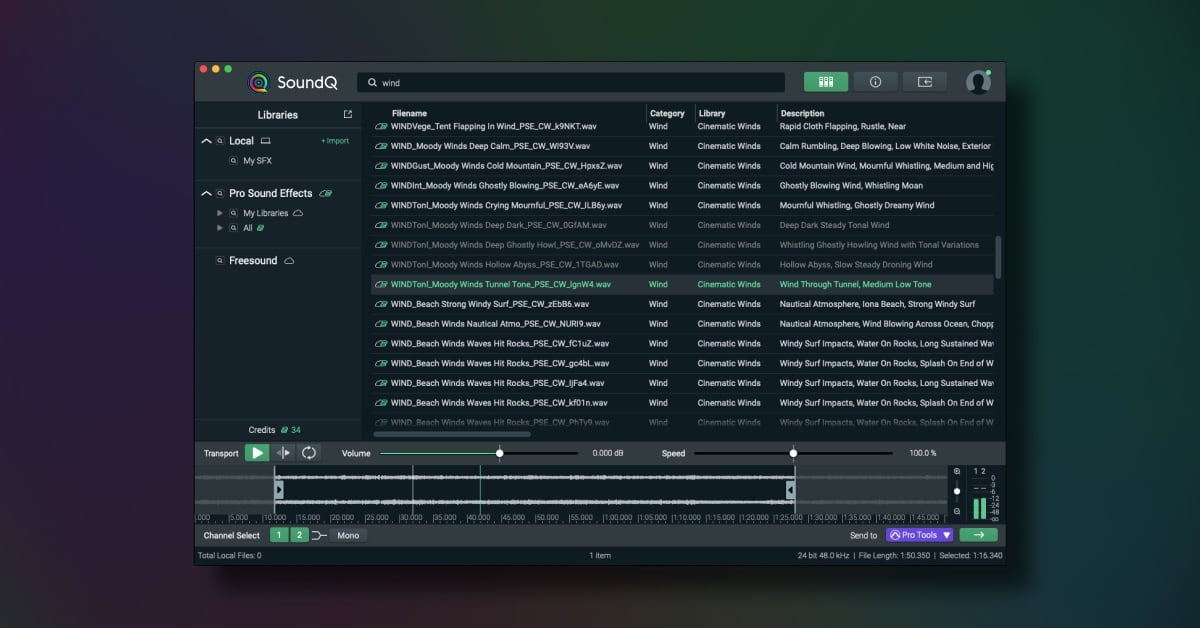Discover best practices for picture editors to streamline the process of preparing and delivering sessions for audio post production.
As a post sound editor and mixer, how well my work on a project goes weighs heavily on the picture editor and how they organize and deliver a session to me. By using the tips below, you can assure the process is as smooth as possible and your sound team will be able to get right to work.
1. Keep Your Tracks Organized
At minimum, break your tracks into food groups. Food groups refer to different types of audio in your project. The simplest breakdown can be dialogue, sound effects and music.
Some of the best editors I work with set up audio tracks before starting their edit and naming them. In Premiere especially - set up a group of Mono tracks for dialogue, mono and stereo tracks for effects and stereo (and mono if needed) tracks for music.

If your project is more complicated with narration and a lot of sound effects, don’t be afraid to break them out into additional groups of tracks. The more organized you are, the easier it will be for your sound team to know what is where in your AAF/OMF and be able to quickly split the audio out to the appropriate tracks and get to work.
Over the years I have seen it all. Some nightmare examples I have seen are: dialogue cross-faded into a background into a music cue on the same track. Also one filmmaker decided every sound effect on their timeline needed to be on its own track - thank goodness it was only a short, but I had to start with an AAF with over 100 tracks. It took me half a day to re-organize before I could start working. When you are up against tight deadlines and budgets, the less time you have to pay a sound professional to re-organize your tracks, the more time they can spend on more important things.
2. Only Use Sound Effects You Have Rights to Use
Just like music, sound effects require a license to use in your project. The easiest way to find sound effects you can use is a tool like SoundQ - which gives you cloud access to all the Pro Sound Effects libraries as well as in-app access to Freesound.org.
If you need to cut in temp sfx that you do not have permission to use, the best thing you can do is make sure to put these on the same group of tracks and let your sound team know that those sounds will all need to be replaced. This will save your sound designer time (and money) by easily being able to mute these tracks, but still have them as a reference for when they are bringing in new sounds.
3. Keep the Production Sound Metadata Intact
What this involves will vary from software to software, but you want to maintain the metadata from the production audio files through your edit and on to your post sound team. When editing dialogue, your sound team needs to have access to all the tracks that were recorded on set. AVOID nested sequences and merged clips. If you do use them, you will likely have to go back and re-build your timeline to include the original audio. This can be a very time-consuming process.
If you do find yourself in this situation, one trick that can sometimes fix this problem is to export an EDL or XML file and re-import it back into your NLE and re-link to the original audio. You can then export your AAF or OMF from this timeline for sound. If you are unsure of your workflow, consider doing a test early on in the editorial process to make sure your post sound team can properly re-link to the production audio. This leads perfectly to the next tip:
4. Talk to Your Sound Team!
The best thing you can do is talk to your sound team. Every crew works a little differently, so you can save yourself and your sound team major headaches later in the process by having a conversation with your Supervising Sound Editor to establish a workflow and get their turnover spec sheet so you know what they need.
Things a sound team will typically ask for:- AAF
- .mov (Preferably DNxHD or ProRes LT)
- Raw Production Audio Files (also referred to as “Dailies” or ‘Sound Rolls”)
- EDL or XML for each version of the picture you deliver. See cargocult’s A Letter to the Editor.
- PDF Shooting Script
- Lined Script
5. Follow the Directions on the Turnover Spec Sheet
As post sound professionals, we know what works for us. If we ask for an AAF with specific settings, please use them. If we ask you to .zip a folder before uploading to Google Drive, please do it. If we ask you not to upload and share a folder using Dropbox, please don’t. Your sound crew knows what works for them and create deliverable spec sheets to make sure the process is as smooth as possible.

I like to get involved on a film as early as possible, often during pre-production. The best thing you can do as a picture editor is get to know your sound team. Find a sound crew you like and build a relationship with them. The more you work together, the easier this process will be and the more time you can spend on the fun stuff.
 Korey Pereira is the owner of Soularity Sound and a freelance sound editor and mixer. He was recently elected to the MPSE Board of Directors and is a lecturer at The University of Texas at Austin.
Korey Pereira is the owner of Soularity Sound and a freelance sound editor and mixer. He was recently elected to the MPSE Board of Directors and is a lecturer at The University of Texas at Austin.
Follow Korey: Twitter | LinkedIn | Instagram | IMDb












